
Spanish dictionaries for kids are great for young learners who need a simple, visual resource.
They’re also useful learning tools for older students looking for a Spanish dictionary they won’t get lost in.
In this post, you’ll get 10 excellent children’s dictionaries in Spanish and English, arranged by age range.
They each have features that will help you or your child learn faster and more efficiently, and they’re fun to read!
Contents
Download:
This blog post is available as a convenient and portable PDF that you
can take anywhere.
Click here to get a copy. (Download)
 Ages: 1-3 years
Ages: 1-3 years
This 14-pager houses the 100 most essential and practical words in Spanish—including words related to food, animals, nature and common objects found around the house.
Despite its short length, it’s a very useful tool for the youngest of learners. The images in the book are of the real thing and not an artist’s rendition, so they realistically present the meaning of each word.
The Spanish translation is given prominence on every page and is written above the English word in slightly larger text. This one is for absolute beginners who want to hit the ground running.
 Ages: 0-5
Ages: 0-5
This Spanish dictionary includes big images in vivid colors that will grab your child’s attention and improve their recall. The book is neatly arranged into themes like colors, numbers, food and clothes.
Because the Spanish translations include the articles el (the, masculine) and la (the, feminine), it helps young readers learn the genders of the nouns illustrated in the book as they go.
And because this book is super sturdy, you can keep it for years to be used by multiple children or share it with other young learners in your life who want a solid start in Spanish.
 Ages: 1-5
Ages: 1-5
This is an excellent coffee table book that you can use to learn (or teach) a few new words each day without interrupting your daily routine.
It has all the characteristics of a DK book: high-quality photos, a streamlined layout and clear and simple text. There’s also a good dose of photos where different parts of the whole are labeled, like with the human body.
As a “first” book, readers will gain enough confidence and interest to move forward in their language journey. Because of its inherent ease, you’ll be naturally spurred on to keep learning.
 Ages: 5 – 6 years
Ages: 5 – 6 years
This Spanish dictionary for kids is thematically arranged (family, at home, at school, etc.) which makes the words easier to remember as opposed to an alphabetical list which, in actuality, is a mishmash of unrelated concepts.
There’s also a pronunciation guide for the words so you can correctly articulate them, instead of just being able to identify them with your eyes.
What really sets this book apart are the 2-page “Let’s Talk” spreads peppered throughout. These sections offer conversation examples so that Spanish beginners can see the to-and-fro of conversation, basic sentence construction and even grammar along the way.
 Ages: 3-8
Ages: 3-8
Another offering from DK, this comprehensive children’s dictionary includes 2,000 Spanish words and phrases.
It contains some wonderful scenes where the different parts are labeled, like the everyday objects in a kitchen, thus contextualizing the objects related to each other.
On the left-hand side of some of the pages, there’s a section called “extra words to learn,” which is perfect for learners who want to go the extra mile. It also offers a rundown of essential Spanish phrases for small talk and a section on Spanish verbs that explains the basic principles of conjugation.
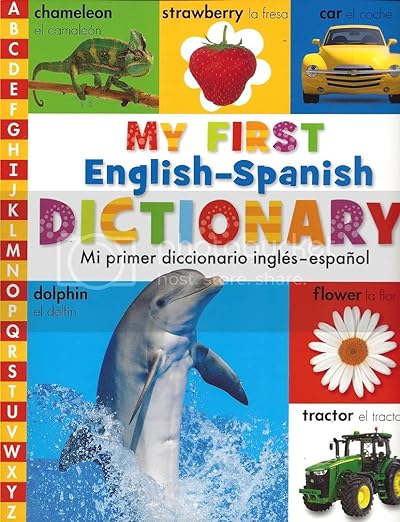
This English-Spanish dictionary is perfect for early bilingual language development and building a basic vocabulary. It includes large labeled photographs and words divided into two sections.
The first section covers different categories of animals and their habitats including pets, farms, wildlife, parks, forests, jungles and deserts. The second section covers various topics such as food, insects, the body, transportation, clothing, family, cooking, school and the beach.
This is a simple, straightforward resource that’s great for young learners. It teaches the basics without getting bogged down with extra details that can be confusing or overwhelming.
 Ages: 6-12
Ages: 6-12
This dictionary offers over 1,000 Spanish words distributed across 10 categories including people, food, animals, entertainment and more.
Like the other books in this collection, the Spanish translation has textual prominence and is written above the English text. The more you look at the pictures, the more you gain instant recognition of the photo in Spanish and not in English.
You’ll know that you’ve mastered this book when you don’t have to look at the English translation written below the Spanish—and eventually, you won’t even need to look at the Spanish, either.
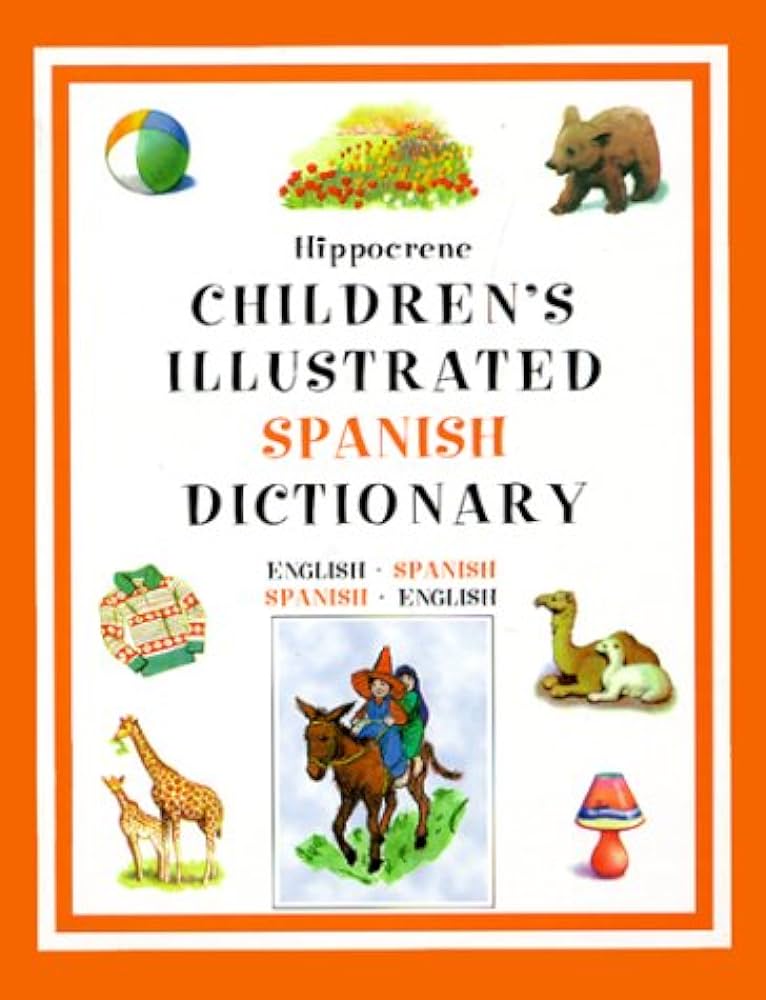
If you want something a bit more advanced and substantial, this dictionary offers 500 illustrated Spanish words. It’s 94 pages long and goes beyond the absolute basics.
There are more vocabulary words to learn, more objects to see and finer nuances to understand. They’re presented in an easy-to-memorize way and you can always refer back to the book later for a refresher.
This one also has phonetic guides for every word so you get guidance on how the words are actually pronounced, how they are syllabicated and where the stresses lie. This means you can enrich your vocabulary and your speaking ability at the same time.
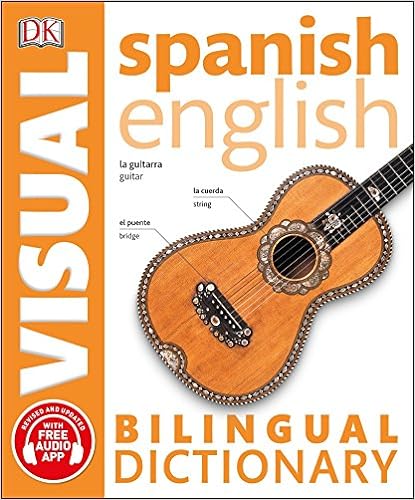
This bilingual visual dictionary is available in paperback or for Kindle. It packs in over 10,000 common words, offering an engaging tool for greatly expanding key vocabulary.
Each Spanish entry comes with an eye-catching illustration and the vocabulary is organized by theme, making it easy to find what you’re looking for. Categories include food and drink, sports and leisure, travel and transportation.
The clear, comprehensive indexes help you find your way. The dictionary also comes with an audio app where you can fear all the words spoken out loud. This will help you (or your child) perfect your pronunciation as you learn new words.
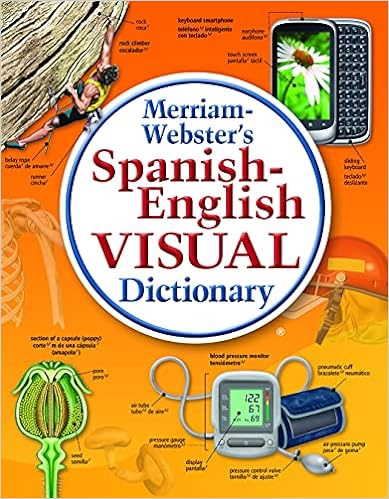
This Spanish-English visual dictionary is a bestseller for a reason. It includes the core vocabulary in both Latin American Spanish and American English.
It includes both Spanish-to-English and English-to-Spanish sections, so you can look up words in both directions depending on your needs at the moment. This also makes it a great tool to have on hand as you’re reading in Spanish or consuming other Spanish media.
With over 40,000 entries as well as Spanish verb conjugation and irregular English verbs, this is the most comprehensive on the list. It’s great for younger learners and adults looking for something more visual than your typical dictionary.
Benefits of Using a Spanish Dictionary for Kids
A children’s dictionary is one of the most underrated tools for language learning. They’ve been packaged or labeled as something that only caters to the sensibilities of kids, but they’re great for older learners, too. Here’s what makes them so useful:
- The format is simplistic and visual. There’s as little text as possible and you’ve got plenty of pictures with colors vividly exploding right off the page. The pages are often thick and large enough so little hands will have little trouble leafing through them.
- They’re tools for easy, memory-friendly learning. Their simplistic, image-heavy style makes it easier to remember the words so can expand your vocabulary more quickly and efficiently. The pictures will be seared into your memory, especially for visual learners.
- Everything is streamlined, the text especially, and often you only have the English word and its most direct Spanish translation (or vice versa). There isn’t all that extra noise that often characterizes more adult reference materials.
Explore some of the leading language learning sites today and you’ll see that many of them look like they’re designed for kids with their eye-catching visuals and engaging sounds. This is because if your language learning isn’t fun, you won’t be motivated to keep learning. This goes for adults as well as children!
Take advantage of the profound learning experience brought about by these dictionaries for you or the young learners in your life.
They offer easy learning and a quick way to build your Spanish vocabulary without getting bored or overwhelmed!
Download:
This blog post is available as a convenient and portable PDF that you
can take anywhere.
Click here to get a copy. (Download)
And One More Thing…
If you’ve made it this far that means you probably enjoy learning Spanish with engaging material and will then love FluentU.
Other sites use scripted content. FluentU uses a natural approach that helps you ease into the Spanish language and culture over time. You’ll learn Spanish as it’s actually spoken by real people.
FluentU has a wide variety of videos, as you can see here:
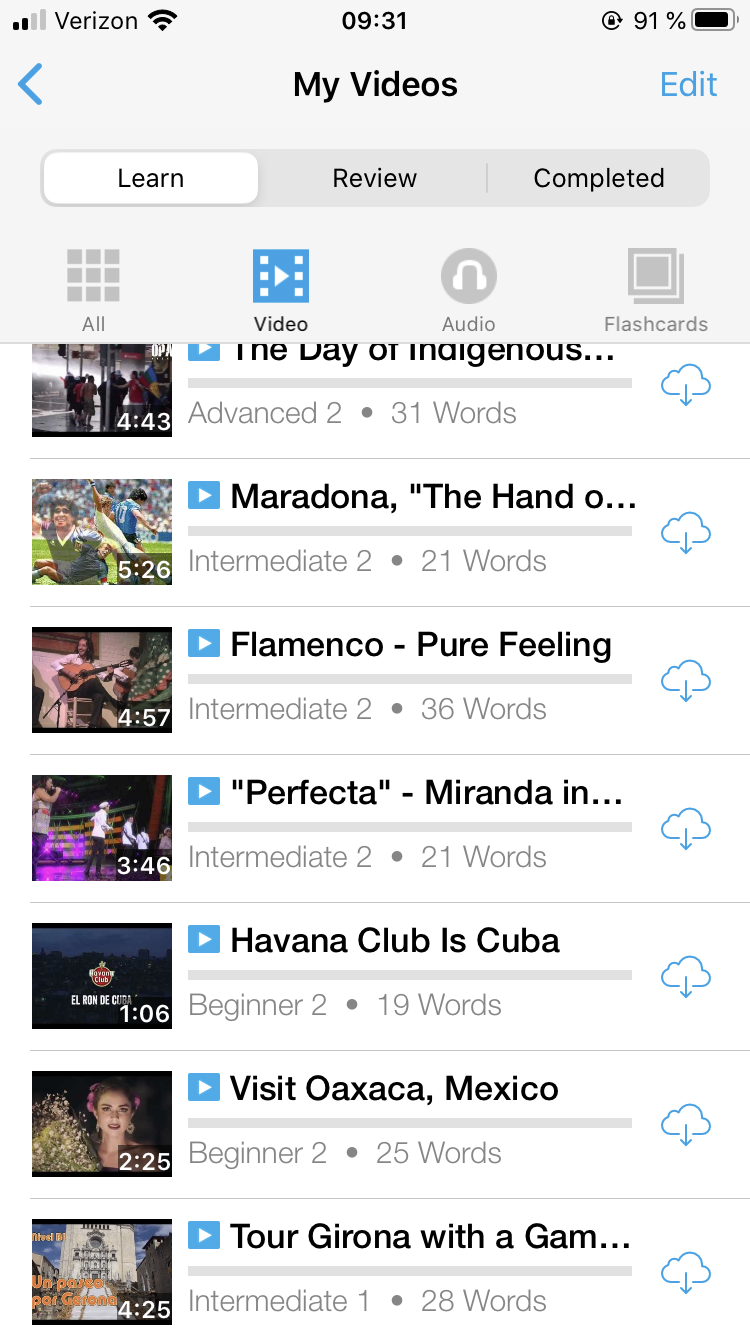
FluentU brings native videos within reach with interactive transcripts. You can tap on any word to look it up instantly. Every definition has examples that have been written to help you understand how the word is used. If you see an interesting word you don’t know, you can add it to a vocab list.
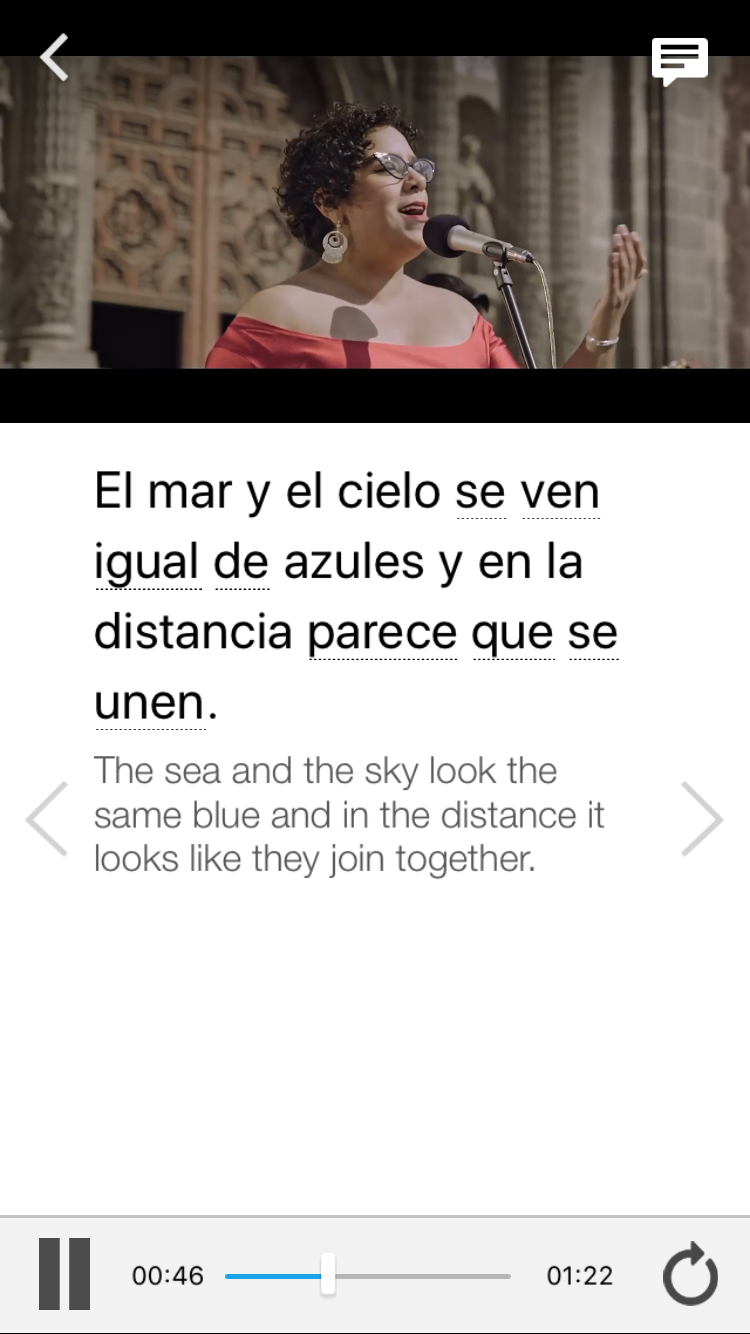
Review a complete interactive transcript under the Dialogue tab, and find words and phrases listed under Vocab.
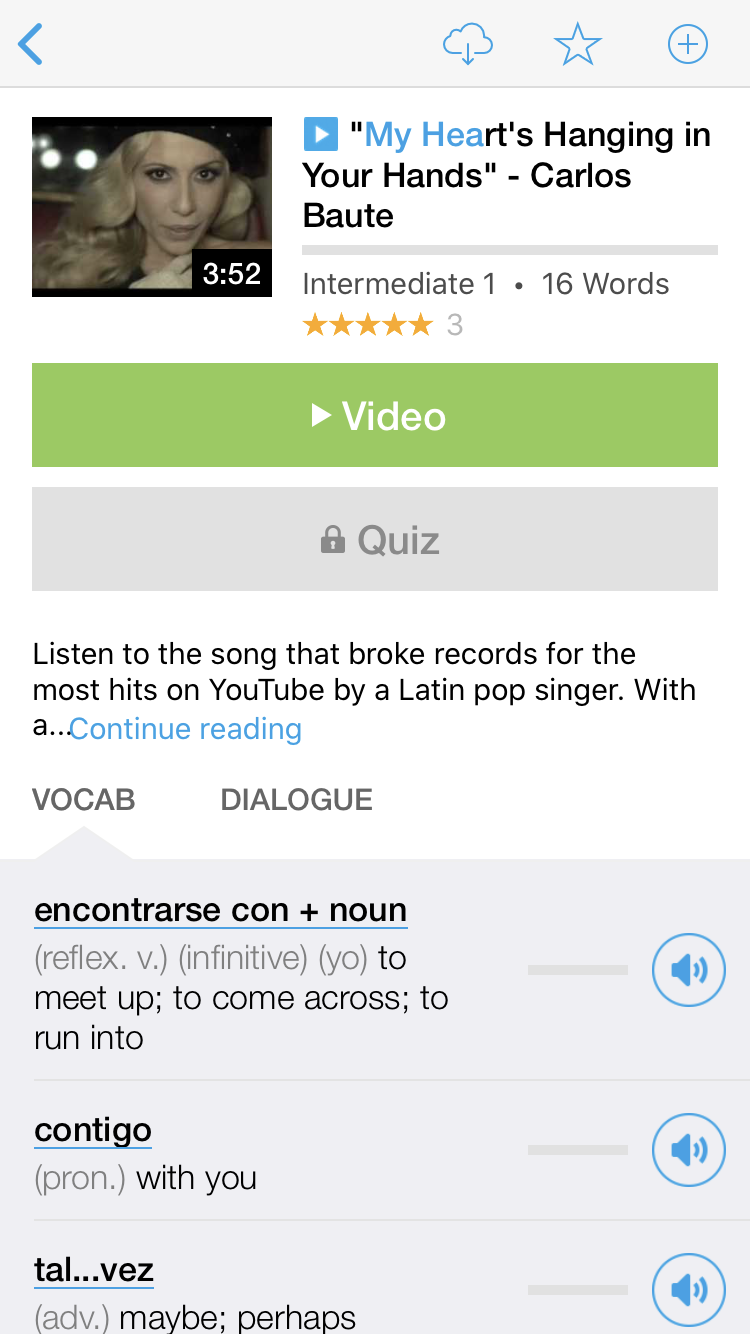
Learn all the vocabulary in any video with FluentU’s robust learning engine. Swipe left or right to see more examples of the word you’re on.
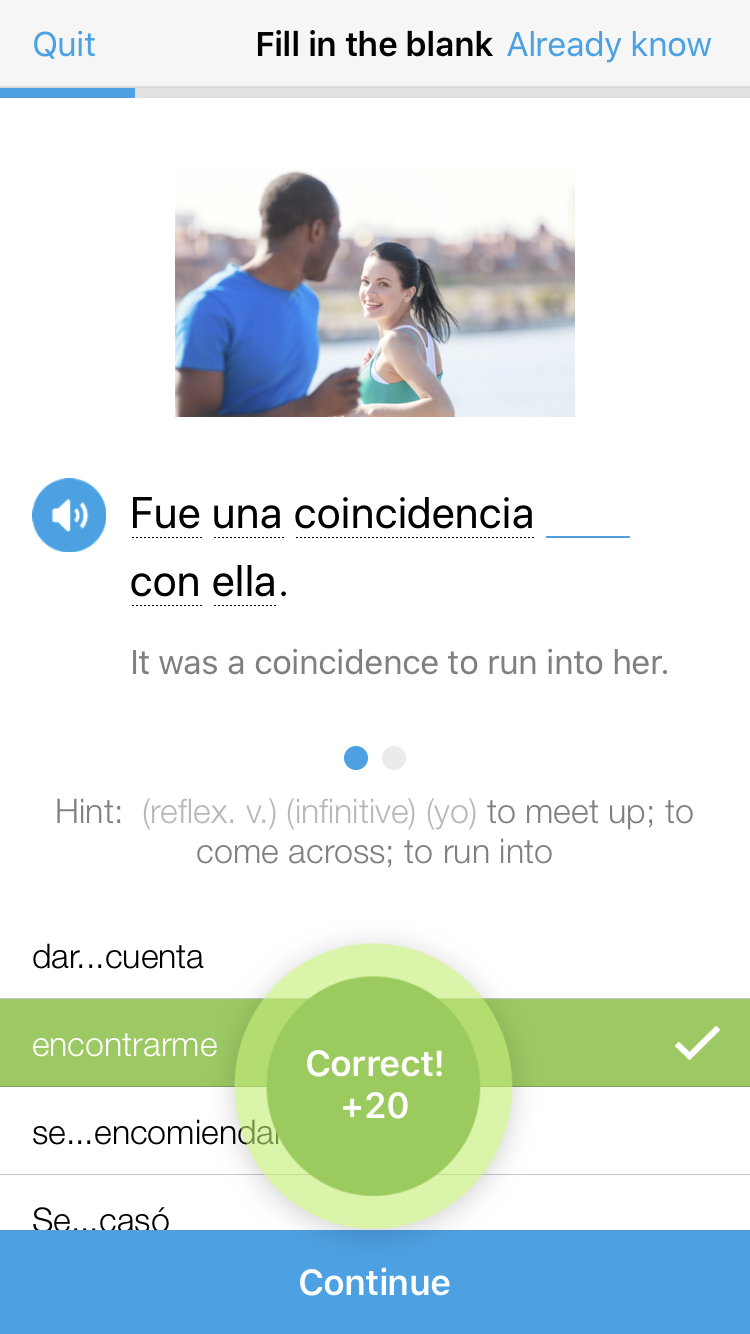
The best part is that FluentU keeps track of the vocabulary that you’re learning, and gives you extra practice with difficult words. It’ll even remind you when it’s time to review what you’ve learned. Every learner has a truly personalized experience, even if they’re learning with the same video.
Start using FluentU on the website with your computer or tablet or, better yet, download the FluentU app.



